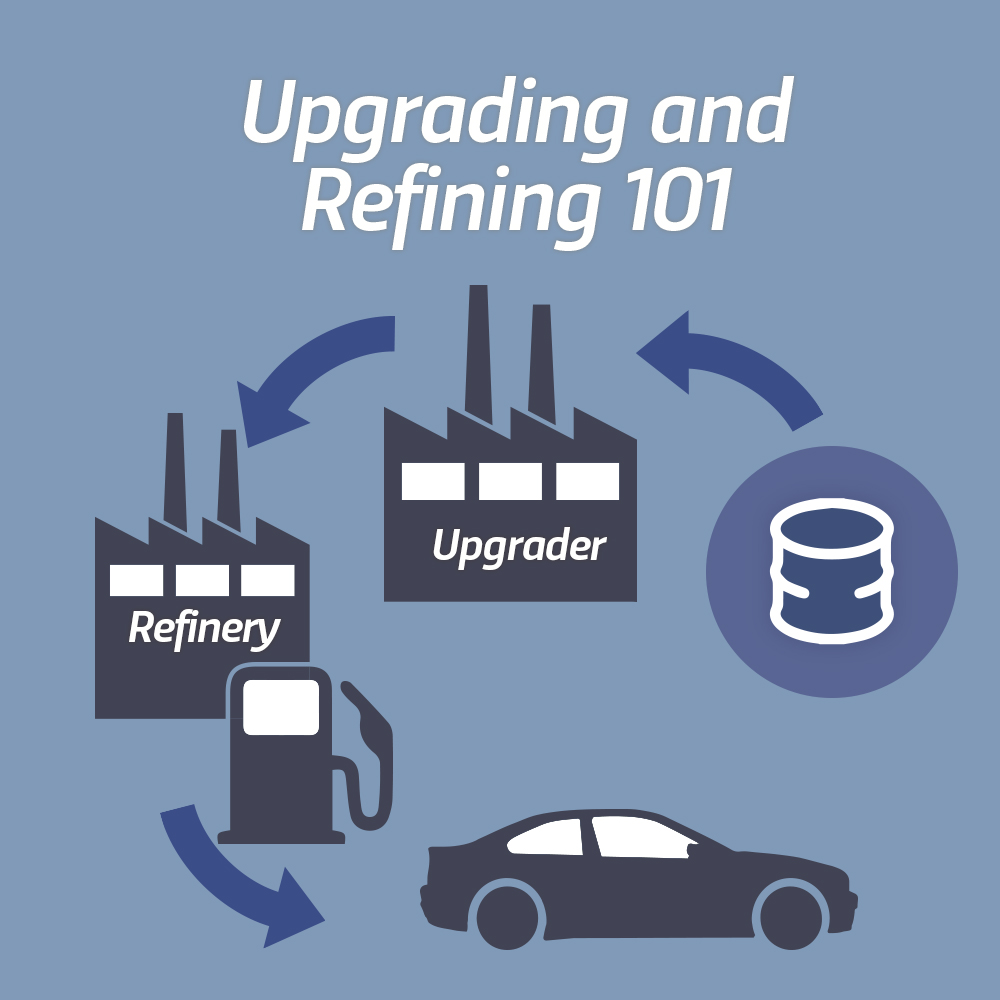Upgrading and refining: how oil gets used

The terms “upgrading” and “refining” sometimes get used interchangeably by people, but it’s important to recognize that these are different processes that accomplish different things.
The purpose of an upgrader is to, essentially, improve (or ‘upgrade’) the quality of an oil product so that it flows more easily and is more valuable. This is done by breaking very large oil molecules down into smaller ones, mostly by using high heat and pressure. Think of breaking boulders down into usable pieces like rocks for a flower garden, or even smaller pieces like gravel.
Upgraders process Alberta’s oil sands resource, and turn it into synthetic crude oil (SCO). Bitumen is a very heavy oil. It does not naturally flow through a pipeline and, generally speaking, it is more difficult to process than a lighter conventional crude oil. This is because bitumen is composed of long molecules that must be broken down into pieces that are usable for gasoline, diesel fuel and other products.
When the oil sands began production decades ago, there were very few refineries in North America that had the capability to process bitumen. Recognizing this, several companies constructed upgraders to convert bitumen into SCO, making it possible to transport and sell.

Today, there are a number of refineries in Canada and the United States that have structured their operations to accept our heavy bitumen. However, since bitumen does not naturally flow in a pipeline, the challenge is to get it from the oil sands to refineries. To do that, the bitumen is mixed with a diluent to make a lighter ‘bitumen blend’ that will flow through a pipeline. This diluted bitumen is (imaginatively) called “dilbit”. When the “dilbit” arrives at the refinery, the diluent is separated out and the bitumen is refined.
The purpose of a refinery is to convert oil into higher-value petroleum products that are sold to end-users. This includes products such as gasoline, diesel, aviation fuel, and asphalt. this is done by sorting oil molecules into the ones that are good for use as lubricating oil, or for diesel fuel, gasoline or jet fuel. This is mostly done by distilling the oil (a bit like distilling alcohol) so that lighter products separate from heavier ones.

In 2014, almost half of the bitumen produced by Alberta was upgraded into SCO among five upgraders. These upgraders are connected to the oil sands projects that produce the bitumen they use.
The remainder of the bitumen was delivered to market in various blends of bitumen and diluents. The characteristics of each blend are different. The largest stream includes some dilbit blends and some heavy oil, and is called Western Canada Select (WCS). It is the price you most often hear quoted to represent heavy oil or dilbit.

Most of Alberta’s total oil deliveries (i.e., both conventional crude and oil sands-derived oil) are sent outside the province for refining. In 2014, 74% of Alberta’s total oil deliveries were made to the U.S., 11% were made to the rest of Canada, and about 0.1% were made to other countries.
The remaining 15% of Alberta oil deliveries were refined in the province. Most of the refineries in Alberta are located in the Edmonton area. The transportation fuels produced by these refineries are largely consumed in Western Canada.

The economics of upgrading and refining is complex. The Royalty Review Panel will be digging into these issues as it identifies opportunities to optimize Alberta’s royalty framework.
Source: Alberta Energy